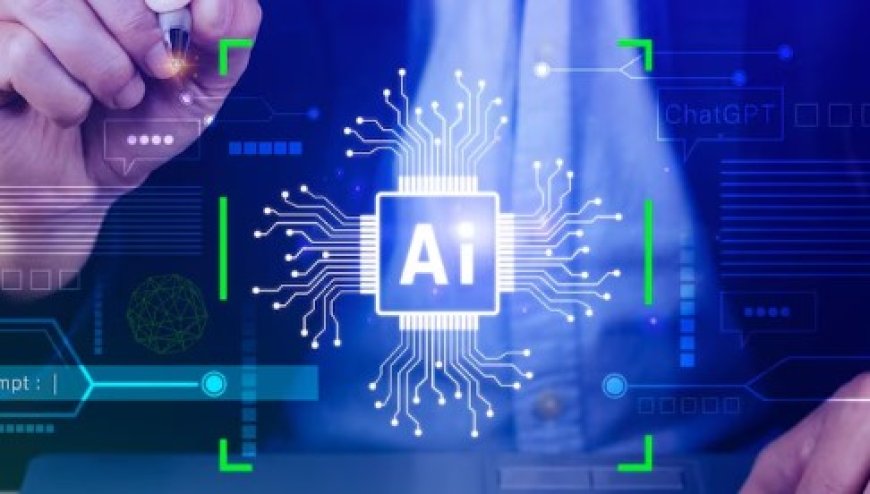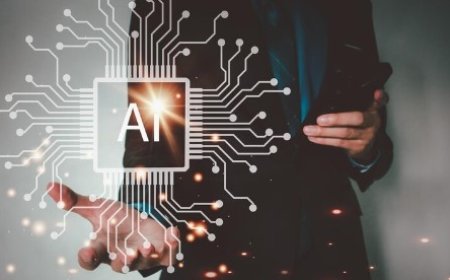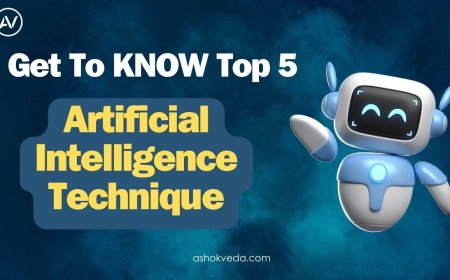The Latest Innovations in AI Technology
Discover AI innovations, technology, advancements, machine learning, applications, trends, research, solutions, automation, tools, artificial intelligence

Artificial Intelligence (AI) is a cutting-edge subject of study in an era of exclusive technical developments. Every day, new and innovative advancements are changing the AI technology environment and expanding the limits of what was previously considered possible. The most recent advancements in artificial intelligence (AI) are altering entire sectors and changing how we live, work, and interact with technology. These developments range from machine learning systems that can process huge amounts of data to complex natural language processing systems that look like human interaction.
We are certainly noticing a fundamental change in the way that machines deal with the world around them as we delve further into some of the most recent developments in AI technology. This blog post provides an overview of the most current developments, patterns, and uses of artificial intelligence that are influencing its future. It acts as a window into the dynamic and constantly changing field of artificial intelligence. Come along on this adventure as we explore the state-of-the-art findings that are powering the next stage in technological advancement and opening up new avenues for AI research.
The need for creative solutions motivated by artificial intelligence (AI) is increasing in today's dynamic digital environment. Companies in a variety of sectors are tackling difficult problems and looking for AI-powered solutions to improve decision-making, improve workflows, and provide unmatched consumer value. In an increasingly data-driven world, integrating AI technology has become not just a competitive advantage but also a must for remaining relevant in industries ranging from healthcare and banking to manufacturing and culture.
Additionally, as businesses look for methods to improve customer experiences, optimize supply chains, and adjust to remote work environments amid extraordinary events, recent global events increased the use of AI solutions. In light of this, the ground is prepared for a fresh wave of AI advances to surface, meeting new demands and expanding the realm of AI's possibilities. The most recent developments in AI technology present promising answers to problems as people and organizations attempt to traverse the complexity of the modern world and open doors for development and transformation.
Challenges and complexities pace with the ever-changing field of AI
Fast Evolution: Continuous research and development is the driving force behind the amazing speed at which AI technologies are developing. Because of this quick evolution, professionals need to stay up to date on new developments in their industry as well as stay aware of emerging trends and discoveries to stay relevant.
Information Overload: The number of research papers, articles, blogs, and online forums that are available in the AI field can be somewhat challenging. Professionals find it difficult to determine which advancements are most pertinent and significant for their particular interests or areas of expertise due to the a lot of available information.
Technological Complexity: Artificial Intelligence (AI) comprises a wide range of techniques and technologies, each having specific complexities. Examples of these include computer vision, natural language processing, machine learning, and deep learning. It is difficult to remain proficient in all areas of AI since mastering these technologies demands commitment and ongoing learning.
Regulatory and Ethical Considerations: Legal and Ethical Considerations: As AI applications proliferate across a range of industries, including finance, healthcare, and autonomous cars, legal frameworks and ethical issues get complex. To make sure that follow all the rules, regulations, and ethical principles, professionals have to ensure
competition and Innovation: There is strong competition in the AI space as businesses and researchers compete to provide innovative solutions and gain market share. In addition to promoting quick innovation, this competitive climate requires professionals to continually grow and change to keep a competitive advantage in their industry.
Interdisciplinary Nature: AI is interdisciplinary, interacting with computer science, mathematics, psychology, and science, among other fields. Because of its integrative character, which demands a deep understanding of many concepts and techniques, experts find it difficult to understand every aspect of AI without having a wide range of training and experience.
Resource Constraints: Experts working in AI have significant challenges due to limited resources, including time, financing, and access to data. Insufficient funding may delay research, prototype development, and large-scale implementation of AI solutions, hence impeding advancement and creativity in the domain.
Fairness and prejudice: Ensuring fairness and addressing prejudice in AI systems is a difficult task that calls for constant attention to detail and proactive steps. Biases can take many different forms, such as flaws in datasets, algorithms, and decision-making processes, which can have unexpected implications like disparity and prejudice. Collaboration across disciplines and a dedication to ethical AI principles are necessary for reducing bias and advancing justice in AI systems.
latest innovations in AI-powered robotics and automation?
Advanced Sensors: Robots possess advanced sensors that allow them to more effectively sense and engage with their environment. These sensors, which include cameras, LiDAR, and ultrasonic sensors, allow robots to precisely recognize things and navigate intricate areas.
Algorithms for Machine Learning: AI-powered robots employ these algorithms to continuously learn from data and boost their performance. Robots can adjust to shifting situations, move more efficiently, and complete tasks more quickly thanks to these algorithms.
Collaborative Robots (Cobots): Safely working with humans, robotic assistants, or cobots, are becoming more and more popular. These robots are perfect for jobs requiring human-robot cooperation, like assembly lines and warehouse operations, because of their small, flexible, and simple-to-programme design.
Autonomous Navigation: AI-powered robots can navigate on their own, so they can move around and carry out activities without assistance from a person. They make use of location and mapping algorithms to understand their environment and devise the best ways to get where they're going.
Task Flexibility: Modern robots are made to be highly flexible and adaptable, able to carry out a variety of jobs in a variety of settings. Responsive control systems, modular designs, and swappable end-effectors provide this adaptability.
Human-Robot Interaction: powered by AI robots are getting better at interacting with people in a way that feels natural to them. They make it possible for human and robot interactions to be more natural and intuitive by being able to recognize and react to human speech, motions, and facial expressions.
Predictive Maintenance: Algorithms based on AI are employed in predictive maintenance to forecast when robots will break down or need maintenance. These algorithms can detect trends and defects that point to possible problems by analyzing sensor data and previous maintenance records. This allows proactive maintenance to be carried out, reducing downtime and increasing productivity.
AI-Powered Vision Systems: To perceive and interpret visual information, robots are provided with AI-powered vision systems. By utilizing these systems for tasks like item recognition, quality inspection, and navigation, the robot's knowledge and interaction with its surroundings will be improved.
Recent developments in AI technology are changing whole fields and significantly altering how we work and live. AI-powered inventions, ranging from interactive robotics to machine learning algorithms, are revolutionizing multiple industries by increasing productivity and refining decision-making. But these developments also bring with them difficulties like complex regulations, ethical issues, and the requirement for lifelong learning. Notwithstanding these obstacles, artificial intelligence has a bright future beyond it, providing answers to challenging issues and creating opportunities for more innovation and change. We must continue to be watchful for correcting biases, guaranteeing justice, and advancing ethical AI development as we study the potential of AI technology.





































